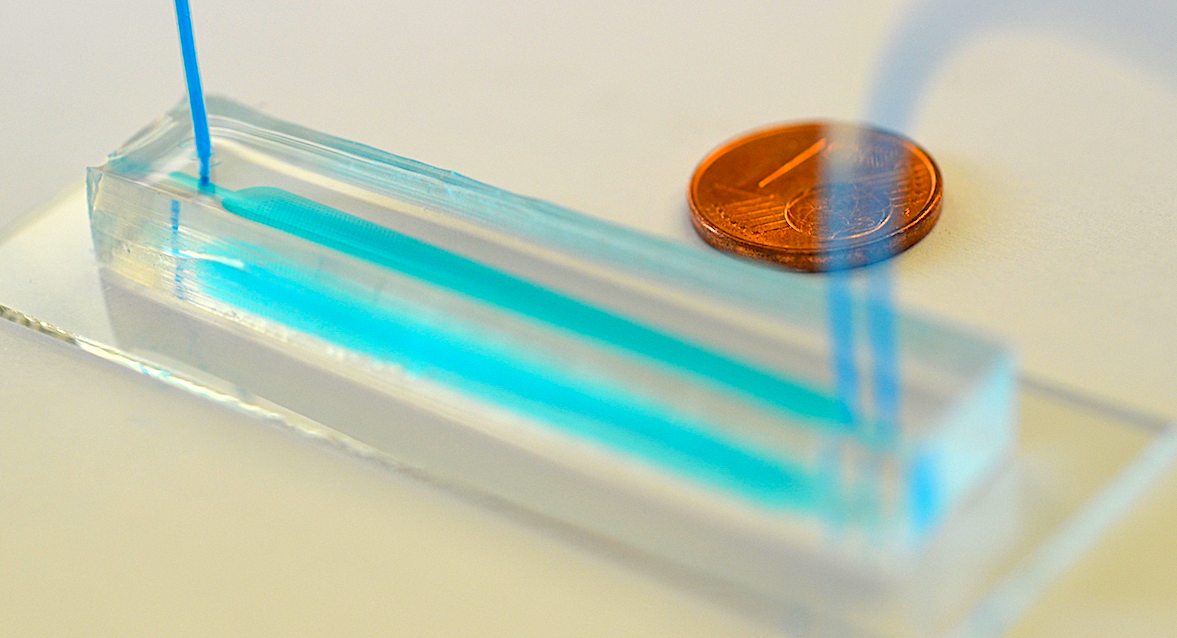
Microfluidic chip for bioassays
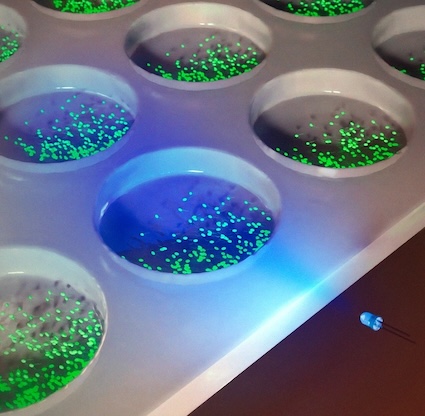
We use the model microalgae Chlamydomonas reinhardtii to directionally transport passive beads that can be 20 times larger than a single microalga.
To understand why repeating twice the exact same experiment with Chlamy can give different results, see here.
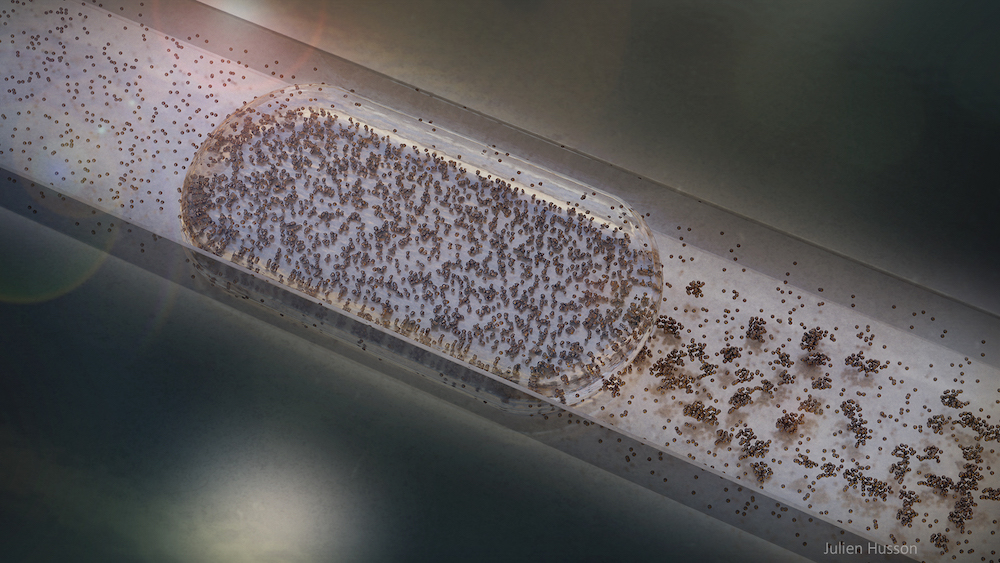
If you've ever waited too long before sipping on your cappuccino you may have noticed the foam settling down. How can we prevent this? One way is to add solid particles to the foam. Our first observations on how particles get to the air/liquid interface are here. Can we replace solid particles by lipids and still stabilize the emulsion? See here. Image by Julien Husson.
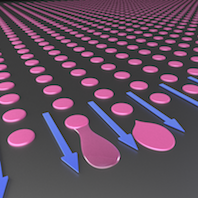
We developed a new microfluidic platform enabling monodisperse droplet production without relying on precise flow-control. Droplets are created and immobilized on surface-energy anchors. The contents of the anchored droplets can be monitored over time, stimulated by any biochemical solution, and selectively recovered from the microfluidic chip at any point in time.
For the physics behind the device, see the article in
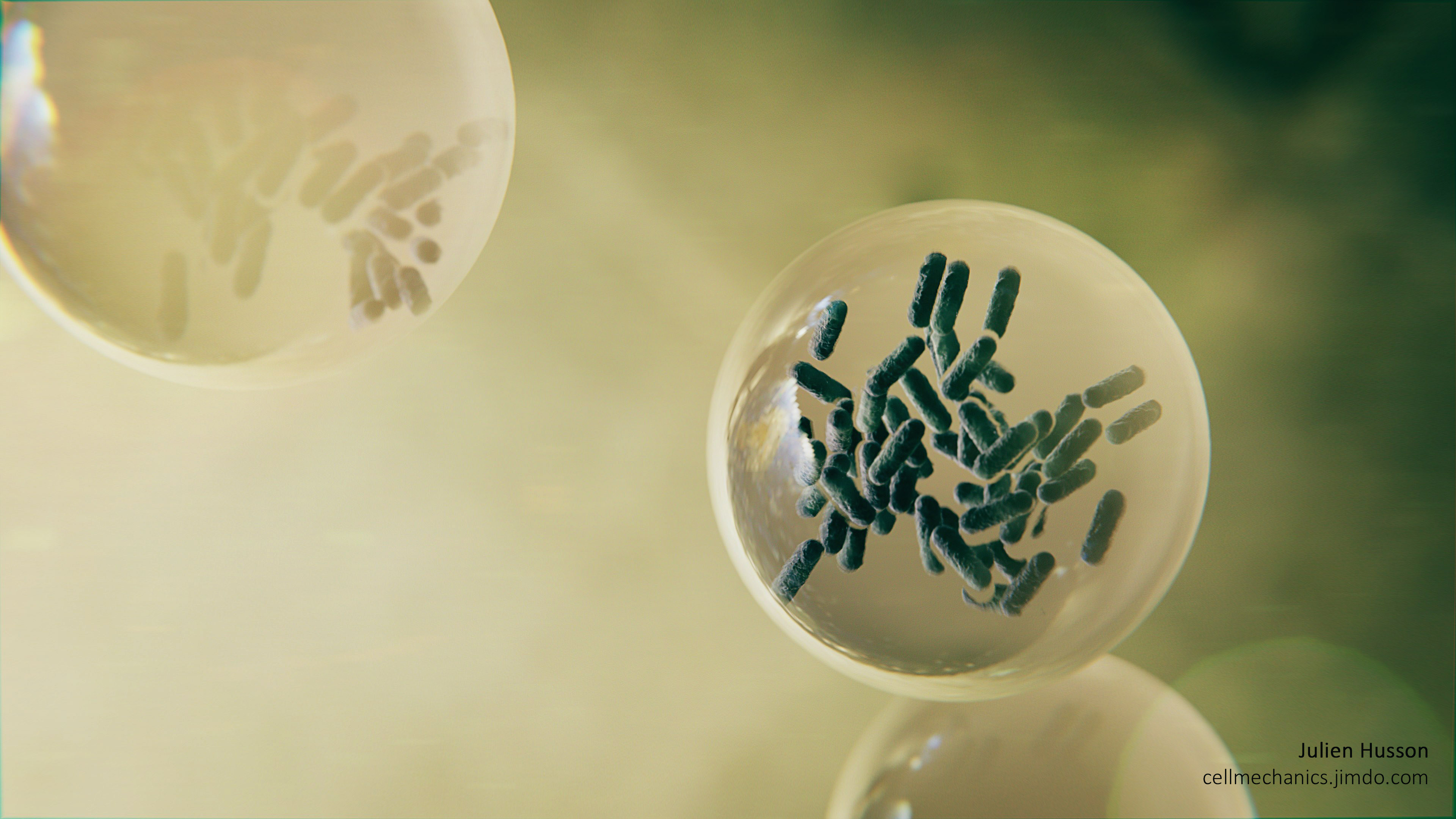
Place a couple bacteria in an environment favourable for growth. How long does it take for the colony to reach a given size? Such a question is relevant e.g. in the realm of infectious diseases. Here, we combine experiments, theory and numerics to probe the variability in growth behaviour of bacterial colonies. A small number of bacteria are encapsulated within microdroplets, and their growth is monitored over time. We show that the variability in the initial conditions — initial number of cells, generation-dependent division times — is key to predict the distribution of population sizes. Read the article here. Work with Charles N. Baroud and Antoine Barizien. The image was drawn by Julien Husson.
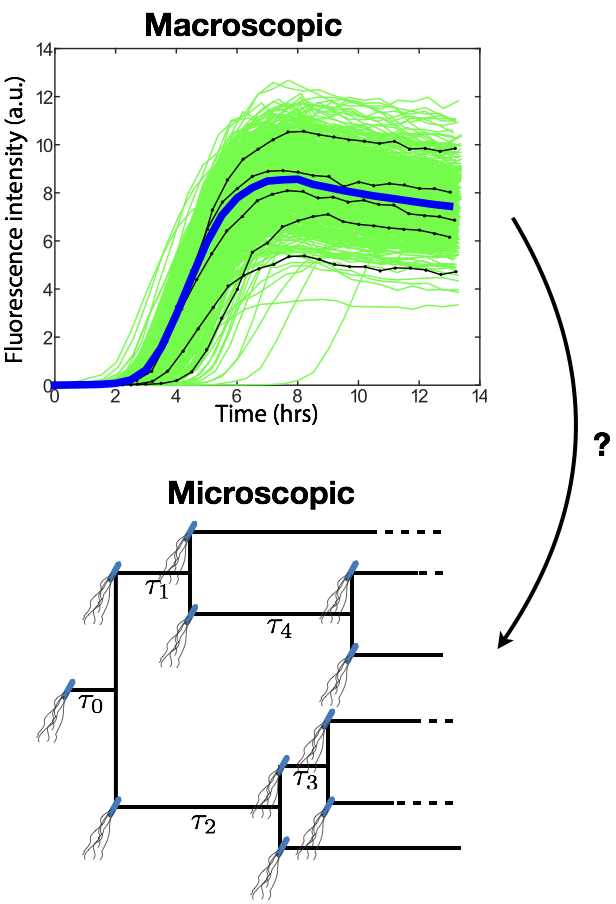
Each cell is different. Can we infer the behavior of single cells from observations of populations of cells? We monitor the growth of ~1000 monoclonal bacterial colonies in parallel and find that every growth curve is different. Can the heterogeneity of the growth curves teach us something on the heterogeneity of division times at the single-bacterium level? When drugs impair bacterial growth, can we characterize the individual behavior of drug-resistant mutants from population measurements? Ongoing project with Charles N. Baroud and Antoine Barizien.
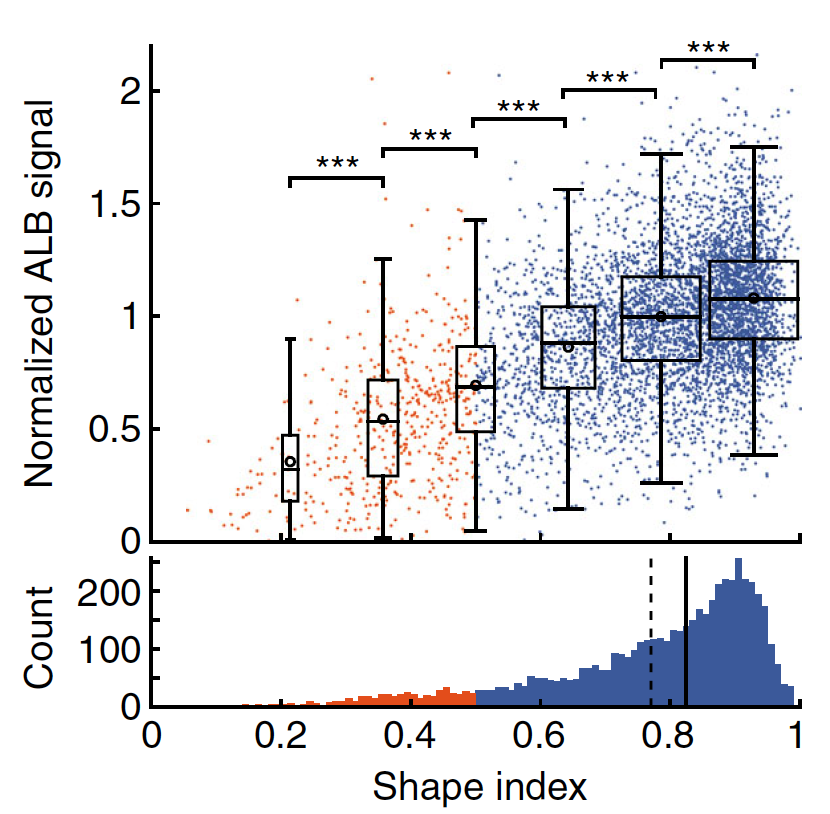
Can we quantify cellular secretions at the single-cell or single-spheroid level? We are currently developing a set of tools to perform a standard ELISA test in microfluidic droplets containing a single cell, or a single spheroid. This is an ongoing project with Charles N. Baroud and Adrien Saint-Sardos.
For the formation of spheroids in microfluidic droplets and the "big data"-type analysis of, among others, intracellular protein production, see our article in